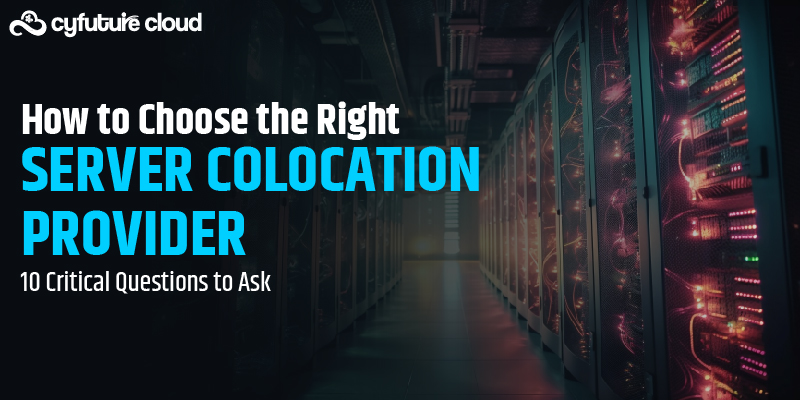Get 69% Off on Cloud Hosting : Claim Your Offer Now!
- Products
-
Compute
Compute
- Predefined TemplatesChoose from a library of predefined templates to deploy virtual machines!
- Custom TemplatesUse Cyfuture Cloud custom templates to create new VMs in a cloud computing environment
- Spot Machines/ Machines on Flex ModelAffordable compute instances suitable for batch jobs and fault-tolerant workloads.
- Shielded ComputingProtect enterprise workloads from threats like remote attacks, privilege escalation, and malicious insiders with Shielded Computing
- GPU CloudGet access to graphics processing units (GPUs) through a Cyfuture cloud infrastructure
- vAppsHost applications and services, or create a test or development environment with Cyfuture Cloud vApps, powered by VMware
- Serverless ComputingNo need to worry about provisioning or managing servers, switch to Serverless Computing with Cyfuture Cloud
- HPCHigh-Performance Computing
- BaremetalBare metal refers to a type of cloud computing service that provides access to dedicated physical servers, rather than virtualized servers.
-
Storage
Storage
- Standard StorageGet access to low-latency access to data and a high level of reliability with Cyfuture Cloud standard storage service
- Nearline StorageStore data at a lower cost without compromising on the level of availability with Nearline
- Coldline StorageStore infrequently used data at low cost with Cyfuture Cloud coldline storage
- Archival StorageStore data in a long-term, durable manner with Cyfuture Cloud archival storage service
-
Database
Database
- MS SQLStore and manage a wide range of applications with Cyfuture Cloud MS SQL
- MariaDBStore and manage data with the cloud with enhanced speed and reliability
- MongoDBNow, store and manage large amounts of data in the cloud with Cyfuture Cloud MongoDB
- Redis CacheStore and retrieve large amounts of data quickly with Cyfuture Cloud Redis Cache
-
Automation
Automation
-
Containers
Containers
- KubernetesNow deploy and manage your applications more efficiently and effectively with the Cyfuture Cloud Kubernetes service
- MicroservicesDesign a cloud application that is multilingual, easily scalable, easy to maintain and deploy, highly available, and minimizes failures using Cyfuture Cloud microservices
-
Operations
Operations
- Real-time Monitoring & Logging ServicesMonitor & track the performance of your applications with real-time monitoring & logging services offered by Cyfuture Cloud
- Infra-maintenance & OptimizationEnsure that your organization is functioning properly with Cyfuture Cloud
- Application Performance ServiceOptimize the performance of your applications over cloud with us
- Database Performance ServiceOptimize the performance of databases over the cloud with us
- Security Managed ServiceProtect your systems and data from security threats with us!
- Back-up As a ServiceStore and manage backups of data in the cloud with Cyfuture Cloud Backup as a Service
- Data Back-up & RestoreStore and manage backups of your data in the cloud with us
- Remote Back-upStore and manage backups in the cloud with remote backup service with Cyfuture Cloud
- Disaster RecoveryStore copies of your data and applications in the cloud and use them to recover in the event of a disaster with the disaster recovery service offered by us
-
Networking
Networking
- Load BalancerEnsure that applications deployed across cloud environments are available, secure, and responsive with an easy, modern approach to load balancing
- Virtual Data CenterNo need to build and maintain a physical data center. It’s time for the virtual data center
- Private LinkPrivate Link is a service offered by Cyfuture Cloud that enables businesses to securely connect their on-premises network to Cyfuture Cloud's network over a private network connection
- Private CircuitGain a high level of security and privacy with private circuits
- VPN GatewaySecurely connect your on-premises network to our network over the internet with VPN Gateway
- CDNGet high availability and performance by distributing the service spatially relative to end users with CDN
-
Media
-
Analytics
Analytics
-
Security
Security
-
Network Firewall
- DNATTranslate destination IP address when connecting from public IP address to a private IP address with DNAT
- SNATWith SNAT, allow traffic from a private network to go to the internet
- WAFProtect your applications from any malicious activity with Cyfuture Cloud WAF service
- DDoSSave your organization from DoSS attacks with Cyfuture Cloud
- IPS/ IDSMonitor and prevent your cloud-based network & infrastructure with IPS/ IDS service by Cyfuture Cloud
- Anti-Virus & Anti-MalwareProtect your cloud-based network & infrastructure with antivirus and antimalware services by Cyfuture Cloud
- Threat EmulationTest the effectiveness of cloud security system with Cyfuture Cloud threat emulation service
- SIEM & SOARMonitor and respond to security threats with SIEM & SOAR services offered by Cyfuture Cloud
- Multi-Factor AuthenticationNow provide an additional layer of security to prevent unauthorized users from accessing your cloud account, even when the password has been stolen!
- SSLSecure data transmission over web browsers with SSL service offered by Cyfuture Cloud
- Threat Detection/ Zero DayThreat detection and zero-day protection are security features that are offered by Cyfuture Cloud as a part of its security offerings
- Vulnerability AssesmentIdentify and analyze vulnerabilities and weaknesses with the Vulnerability Assessment service offered by Cyfuture Cloud
- Penetration TestingIdentify and analyze vulnerabilities and weaknesses with the Penetration Testing service offered by Cyfuture Cloud
- Cloud Key ManagementSecure storage, management, and use of cryptographic keys within a cloud environment with Cloud Key Management
- Cloud Security Posture Management serviceWith Cyfuture Cloud, you get continuous cloud security improvements and adaptations to reduce the chances of successful attacks
- Managed HSMProtect sensitive data and meet regulatory requirements for secure data storage and processing.
- Zero TrustEnsure complete security of network connections and devices over the cloud with Zero Trust Service
- IdentityManage and control access to their network resources and applications for your business with Identity service by Cyfuture Cloud
-
-
Compute
- Solutions
-
Solutions
Solutions
-
 Cloud
Hosting
Cloud
Hosting
-
 VPS
Hosting
VPS
Hosting
-
GPU Cloud
-
 Dedicated
Server
Dedicated
Server
-
 Server
Colocation
Server
Colocation
-
 Backup as a Service
Backup as a Service
-
 CDN
Network
CDN
Network
-
 Window
Cloud Hosting
Window
Cloud Hosting
-
 Linux
Cloud Hosting
Linux
Cloud Hosting
-
Managed Cloud Service
-
Storage as a Service
-
 VMware
Public Cloud
VMware
Public Cloud
-
 Multi-Cloud
Hosting
Multi-Cloud
Hosting
-
 Cloud
Server Hosting
Cloud
Server Hosting
-
 Bare
Metal Server
Bare
Metal Server
-
 Virtual
Machine
Virtual
Machine
-
 Magento
Hosting
Magento
Hosting
-
Remote Backup
-
 DevOps
DevOps
-
 Kubernetes
Kubernetes
-
 Cloud
Storage
Cloud
Storage
-
NVMe Hosting
-
 DR
as s Service
DR
as s Service
-
-
Solutions
- Marketplace
- Pricing
- Resources
- Resources
-
By Product
Use Cases
-
By Industry
- Company
-
Company
Company
-
Company
Working of Cloud Bursting: Pros & Cons
Table of Contents
Today, businesses face the challenge of managing fluctuating workloads and ensuring optimal performance. Cloud bursting emerges as a strategic solution, offering the flexibility to handle these dynamic demands. But what is cloud bursting? In essence, it allows enterprises to extend their on-premise IT resources to the public cloud during peak times or specific scenarios, seamlessly managing increased workloads without over-provisioning their in-house infrastructure.
This approach, known as cloud bursting in cloud computing, provides a way to balance internal resources with the vast capabilities of the public cloud. By leveraging the public cloud as a backup, businesses can enjoy peace of mind, knowing they can scale their resources efficiently and effectively whenever needed.
This blog delves into the concept of cloud bursting, exploring its working mechanism, benefits, and drawbacks. We’ll also discuss specific use cases where cloud bursting can be particularly advantageous, providing a comprehensive overview of how this approach can enhance your IT strategy.
What is Cloud Bursting in Cloud Computing?
As the name implies, cloud bursting allows enterprises to extend their on-premise IT resources to the public cloud only when they need them to do so under specific circumstances, allowing them to rely on the public cloud whenever needed as well as providing peace of mind.
There may be two types of on-premise IT resources that are being discussed here: an in-house server setup, or a dedicated private cloud that makes use of virtualized resources to leverage the benefits of on-premise IT resources. Despite the fact that cloud bursting is, in theory, a good concept, there are a number of disadvantages and advantages associated with it.
Here, we will be covering some of the salient features of cloud bursting, along with a few of the pros and cons that it has to offer. It will also be discussed in detail how this phenomenon can have a positive impact on the outcomes that are desired within specific scenarios.
How Does Cloud Bursting Work?
There are certain thresholds that IT infrastructure & operations managers define based on the workloads they consider to be mission critical. The importance of this is especially evident when it comes to operations that deal directly with customers and can have a direct impact on their overall experience.
In the event that the defined usage thresholds of a workload or application are reached, as soon as they are achieved, a predefined segment of that workload or application is immediately replicated over to the public cloud environment of a Cloud Service Provider (CSP) such as Cyfuture Cloud.
There is a seamless transition that is the result of this process, and end users are unaware of the transition because it is obfuscated. The public cloud resources are immediately de-provisioned as soon as this spike in demand decreases to a level below the threshold defined by the cloud provider.
Benefits of Cloud Bursting
Cloud bursting is a cost-optimization tool that helps enterprises deploy clouds efficiently. In order to accomplish this, they maintain only the minimum amount of IT resources within their organisation, since they know they have a secure back-up in place in the event that the number of users suddenly increases.
It is also important to keep in mind that when an enterprise uses public cloud services in this way, they are just consuming those resources temporarily. Most of these public cloud providers have a “pay as you go” pricing model for their infrastructure or solutions, which is very useful in the case of a “pay as you go” pricing model.
Additionally, cloud bursts can help enterprises maintain a strong Business Continuity (BC) posture, in that the risk of a mission critical service going down completely or users experiencing a deteriorated experience in the event of a sudden spike in demand is mitigated.
Outlining the benefits of cloud bursting:
| Benefit | Description |
|---|---|
| Scalability | Enables seamless scaling of computing resources by utilizing additional capacity from the cloud when on-premises resources are insufficient. |
| Cost Efficiency | Allows organizations to avoid over-provisioning on-premises infrastructure, paying only for extra resources used in the cloud when needed. |
| Resource Optimization | Optimizes resource utilization by dynamically allocating resources from the cloud during peak demand, ensuring efficient operations. |
| Flexibility | Offers flexibility to accommodate sudden workload spikes or seasonal demand without upfront infrastructure investments. |
| Improved Performance | Enhances application performance by leveraging cloud resources during high-demand periods, maintaining service levels and responsiveness. |
| High Availability and Redundancy | Ensures availability by leveraging cloud resources as a failover or backup during unexpected surges or hardware failures on-premises. |
| Disaster Recovery | Facilitates disaster recovery strategies by enabling failover to the cloud in case of on-premises infrastructure failures or disasters. |
| Competitive Advantage | Provides the agility to quickly respond to market demands, enabling businesses to stay competitive in rapidly changing environments. |
Downsides of Cloud Bursting
The data that is transferred between enterprise resources and the cloud provider could pose a significant security risk due to the possibility of sensitive information moving back and forth. There are several challenges that need to be overcome in order to ensure data security, privacy, and governance are met across both environments at the same level.
Even though lots of workloads can be transferred to the public cloud when there is a high demand for the service, network and bandwidth-related limitations may still result in a sub-par end user experience (UX) in the event of high demand. This problem is mainly due to the unavoidable latency issue.
When to Use Cloud Bursting?
After understanding the mechanics of cloud bursts and examining their advantages and disadvantages, let’s explore specific scenarios where cloud bursting can be a beneficial strategy. Cloud bursting is particularly feasible for workloads that are not subject to stringent regulations or compliance requirements.
To fully capitalize on the benefits of cloud bursting, enterprises should implement automated mechanisms that trigger once critical usage thresholds for mission-critical processes or applications are reached. This automation ensures optimal performance and resource utilization during peak times without the need for manual intervention. Manual execution of these tasks, while possible, demands significant human effort and may not yield the same efficiency and effectiveness.
Equally important is the automation of de-provisioning cloud resources when usage levels return to normal. This not only helps in cost management but also ensures that resources are efficiently allocated.
Furthermore, cloud bursting can be an excellent option for handling unexpected surges in demand, such as seasonal spikes in e-commerce or sudden increases in data processing needs. By seamlessly extending on-premises capacity to the cloud, businesses can maintain performance and user experience without investing in permanent infrastructure that may go underutilized during off-peak periods.
In addition, cloud bursting can support disaster recovery and business continuity plans. By leveraging cloud resources, organizations can ensure that critical applications remain operational even in the event of on-premises failures.
Overall, adopting cloud bursting with a well-planned automation strategy can lead to enhanced flexibility, cost savings, and resilience in managing dynamic workloads.
Conclusion

A cloud bursting project can be a fruitful proposition when the right circumstances are in place, aided by automation, and conducted under the right conditions. Understanding what cloud bursting entails is crucial: it allows workloads to overflow into a public cloud when local resources are insufficient, offering scalability and cost efficiency. This technique, known as cloud bursting in cloud computing, can significantly enhance an organization’s flexibility and resource management.
However, deploying enterprises must exercise extreme caution regarding data security and regulatory compliance postures. For reliable, secure, and robust public cloud solutions, contact Cyfuture Cloud.
Recent Post

Stay Ahead of the Curve.
Join the Cloud Movement, today!
© Cyfuture, All rights reserved.
Send this to a friend

 Pricing
Calculator
Pricing
Calculator
 Power
Power
 Utilities
Utilities VMware
Private Cloud
VMware
Private Cloud VMware
on AWS
VMware
on AWS VMware
on Azure
VMware
on Azure Service
Level Agreement
Service
Level Agreement 


















